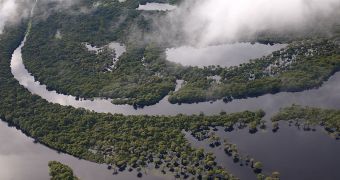Imazon, a green organization, has recently declared that the Brazilian forests are showing signs of improvement. Its representatives have monitored deforestation and forest degradation in the region and are excited to say that these threat factors were “down moderately” from the end of the summer until October, compared to the information gathered last year, during the same period of time.
Imazon benefit from satellite-based assessments that can spot and record the most significant changes occurred in the Brazilian ecosystems. After taking into consideration surfaces of 25 hectares (62 acres), experts realized that 512 square kilometers had been irreparably compromised by deforestation from August to October, Mongabay reports.
Compared to the numbers obtained last year, representatives say they have witnessed progress, since they talk about a 4 percent decline.
Apparently, deforestation operations have dropped by 4%, compared to 533 square kilometers of forests wiped off in 2010. They carry on with the good news, announcing that their measurements reveal further lower rates in forest degradation generated by fires and logging.
Their data highlights a decline up to 52%, compared with the situation revealed last year. It seems that only 1,246 sq km have been affected by dramatic changes in this region, this year, compared with 2,599 sq km suffering radical transformations in 2010.
At the same time, experts know these two risk factors: deforestation and environmental degradation hide more alarming numbers. They agree on the fact that such activities developed in the Brazilian Amazon generated 32 million tons of carbon dioxide that ended up in the atmosphere only in 2011.
Some systems provide even more rapid methods of detecting and stopping illegal deforestation, but farmers and local communities have also adapted and know how to operate to get away with their environmental crimes.
In this context, most of the researchers think that environmental degradation can be evaluated at higher rates than those provided by Imazon and Brazil's National Space Research Agency (INPE).
The dangerous trend is still preserved and encouraged, since the market of cattle, minerals and timber strongly depends on deforestation in the Amazon.

 14 DAY TRIAL //
14 DAY TRIAL //